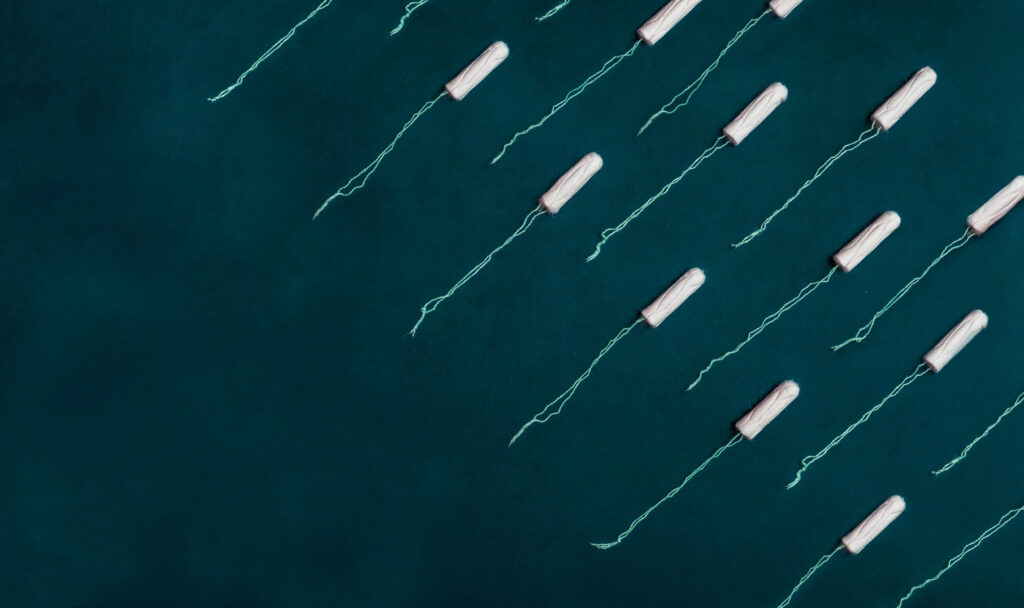Communicating to close the women’s health gap
It’s a topic that has been bubbling and lots of work is being done but it doesn’t alter the fact that women have been underserved, under-researched, and underrepresented in healthcare. Gender biases have shaped everything from medical research to diagnosis rates, leaving women to navigate a system that often doesn’t see them – or worse, dismisses them. But here’s the thing: we are moving in the right direction. And communication professionals are at the heart of it.
This isn’t just about crafting clever campaigns or writing press releases. Communication can be a lever for health equity. It’s about what we do best: turning data into stories, science into empowerment, and silence into advocacy.
Turning complex science into empowerment
A hard truth: medical research has historically been built around men. Women’s participation in studies has been limited, and their voices – whether as researchers or patients – have often been sidelined. During the COVID-19 pandemic, for example, women made up just 34% of first or last authors in related research publications. That’s not only a statistic; it’s a reflection of whose insights shape the field and whose needs are prioritised.
This imbalance in representation isn’t just an academic problem; it trickles down into real-world health outcomes. When the evidence base is narrow, the messages that reach the public are narrower still. And when women are left out of the research, they’re left out of the story about their own health.
This is where communication becomes more than a supporting act, it becomes a vehicle for redressing the imbalance, amplifying the science that does exist, and making sure it actually reaches the people it was meant to serve.
Communication professionals have the power to take dense, technical findings – like female-specific heart attack risks or menopause treatment options – and translate them into something women can actually use. Imagine a woman scrolling through her phone and stumbling across a post that explains, in plain language, why her fatigue and jaw pain might be signs of a heart attack. That’s not simply information – its life saving.
Shining a light on misdiagnosis gaps
Heart disease is the leading cause of death for women. While in recent times we are making strides to create broader awareness of the how heart disease presents in women versus men. Let’s look at some facts and why women are often misdiagnosed- or not diagnosed at all. The numbers are staggering:
- 62% of women experiencing heart attacks still don’t report chest pain, compared to 36% of men.
- Women are 50% more likely than men to receive an incorrect initial diagnosis after a heart attack.
- Women with STEMI heart attacks face a 59% higher chance of misdiagnosis, while those with NSTEMI face a 41% higher chance
These stories belong to women who were told they were “just stressed” or “probably having a panic attack” when, in reality, they were having a heart attack. Stories of delays that cost lives.
Data-driven storytelling is compelling and can raise awareness of non-classic heart attack symptoms like nausea, fatigue, and jaw pain. Take the trusty infographic that can clearly show how symptoms and outcomes differ between men and women and drive home the urgency of seeking care with messages like, “Every minute of delay can mean a loss of heart tissue.”
Rewriting the narrative with inclusive messaging
Here’s a question: when you think of a heart attack, what image comes to mind? Chances are, it’s a man clutching his chest. That’s because mass media has spent decades framing heart attacks – and many other health issues – through a male lens. Women’s experiences are often treated as “atypical” or secondary.
A rewrite of this narrative is what’s needed. Reframing imagery and language to centre women’s experiences, avoiding terms like “atypical” and instead normalise female-specific symptoms, campaigns that empower women to recognise their unique risk patterns – not just “cope” with their symptoms.
Elevating patient voices
If you’ve ever heard a woman’s story about being dismissed by the health care system, you know how infuriating – and heartbreaking – it can be. Take this, for example:
“The nurse told me I was just having a panic attack, so I was taken to the hospital with no urgency.”
This isn’t an isolated incident. It’s a pattern. By weaving real patient stories into public messaging, the narrative can shift from one of dismissal to one of validation. These stories resonate and make people pay attention. They make people care.

Fighting for women’s health in the digital age
The digital world is a double-edged sword for women’s health. On one hand, it’s a powerful tool for spreading awareness. On the other, it’s riddled with barriers. A UK-based study found that educational posts about periods, menopause, and female anatomy are often shadow-banned or hidden by algorithms. Women’s health content gets 66% fewer views and 69% fewer comments than men’s health content.
Advocating for fair visibility of women’s health content online. creative strategies can work around algorithmic censorship and importantly push for platform policy changes that ensure anatomically accurate language isn’t treated like something taboo.
Driving policy and research change
The key is to use communication to drive systemic change. Around the world, initiatives are emerging to prioritise women’s health. For example:
- Health and Care Research Wales is funding projects focused on improving communication around women’s health, from menopause to menstrual health.
- Australia’s WHRTN is training consumers to participate directly in women’s health research and communications.
- Platforms like The Lancet Digital Health are exploring how digital health technologies can improve women’s healthcare access and self-management.
It’s vital to amplify these efforts, translate research into public impact and ensure that women’s health stays front and centre in both public discourse and policy decisions.

Final thoughts
What’s exciting is that as the field evolves, new roles are emerging to meet the unique challenges of women’s health:
- Women’s Health Communication Strategist
- Gender-Sensitive Medical Writer
- Menopause & Midlife Campaign Manager
- Health Equity Storyteller
- Digital Advocacy Consultant for Women’s Research
These roles are essential moving forward. They reflect the growing recognition that communication is a critical tool for health equity.
Action is needed. It’s about saving lives. It’s about making health equity not just a possibility, but an inevitable reality. Bold, strategic communication is where it all begins. But what’s really needed is money – funding for research into health concerns that afflict women – the list is way too long.



